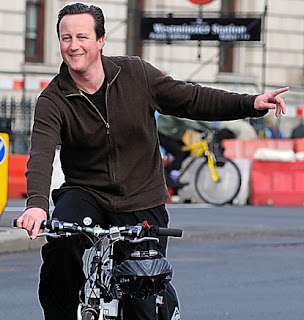I found this piece by Andrew Grimes on the MEN website. I urge you not to bother looking on their site, for fear of driving up their site traffic and hence advertising revenue. Thankfully, the article is so very stupid that I don't need to explain anything. Instead I have merely reproduced the article for you in its entirety:
It is seldom a good
idea to venture out on foot. Hail a taxi. Catch a bus. Drive a car. Cycle. Each
of these alternatives offers the likeliest chance of completing a journey
through a British city without winding up at the undertakers.
Walking is a relic
of cosy, Edwardian rurality, when one could take one’s chances in contest with
a lumbering horse and cart. Nobody got his or her skull crushed under the
hooves of a farmer’s shire.
But that was then.
Today is the
21st century, burnt tyre rubber time, with a bloke in a tall cabin unable
to see the assiduous pedestrian, striding alongside his fuel-stashed
juggernaut.
Yet the walking
lobby won’t give up. It never ceases to campaign for more road space – which
means clearing goods lorries, buses and motor cars off great swathing
widths of our arterial highways—to make way for its insane multitudes of ambling
romantics.
The death toll among
these people is distressing. In 2007 alone 646 pedestrians were killed on
British roads, some crushed by heavy goods lorries. It’s safer to be a combat
soldier. In the same period, 576 soldiers died in Afghanistan.
Yet the walking
fraternity insists that it is a human right to travel on two feet wherever and
whenever, and whatever the grisly hazards of sharing tarmac in built-up city
centres with motorised traffic. Of course, it would really like most of
the motorised stuff out of the way. It calls for modified junctions, safe
walking lanes, overhead platforms.
To give it even half
off what it wanted would require the science of civil engineering to dig up all
the arterial complexes of our cities and start roadbuilding again from scratch,
as if the internal combustion engine had never been invented. If it could be
done it would cost billions.
Walking, its
propagandists claim, is “cheap, green and healthy”. How healthy can you rank a
mode of transport with such a high mortality rate ? Nor is green always its
emblematic colour. Many of the walkers I see are clad in a hideous and
fluorescent yellow.
As for being cheap,
well of course it is. Comparatively. That’s because, unlike slightly more
up-to-date road users, pedestrians enjoy the freedom of the highway without
being urged to buy a driving licence or pay road tax.
I am fairly certain
that Dave Cameron has allowed himself to be photographed in practical footwear, but not, I
think, because he wants to advertise the things.
At any rate, his
coalition has irritated the amblers by abolishing Walking England, a
quango of Labour’s old transport ministry formed to entice motorists on to two
feet. Gone with the quango is a pro-walking handout, funded by the
taxpayer, of £60m a year.
The government’s
withdrawal of this ludicrous facility seems to have been made on economic
grounds. But it is a humanitarian decision, too, whether Dave meant it to be so
or not.
It is not safe to
walk in the vicinity of high-cabined convoys of juggernauts. To pretend that it
is, is to ignore the emergence of all mechanised locomotion since 1912.
Of course the walkers’
propagandists point to Switzerland, where 45 per cent of the population walk to
work, and to Amsterdam which allows neat little walking tracks alongside shiny
rails for crawling trams.
But Switzerland and
Amsterdam, compared to British cities, are mere villages.
They were put together
on altogether different lines, 60 odd years ago, after getting blitzed to
smithereens.
I think that all
walking by major arterial roads, especially at peak periods, should be outlawed
on pain of jail, apart from in places without traffic lights and where the
motorised speed limit has been brought down to 12 miles an hour.
At the same time, I
am not completely heartless. Obviously, walking on bridleways should be encouraged.
It is the only walking –apart from the competitive sort-- that is remotely safe
for its participants. I know that elderly cyclists consider these people pests,
but the granny with her groceries is usually nippy enough to dodge a two-
footed obstacle crawling past the shop window, even if she cannot always bring
herself to knock him down.














